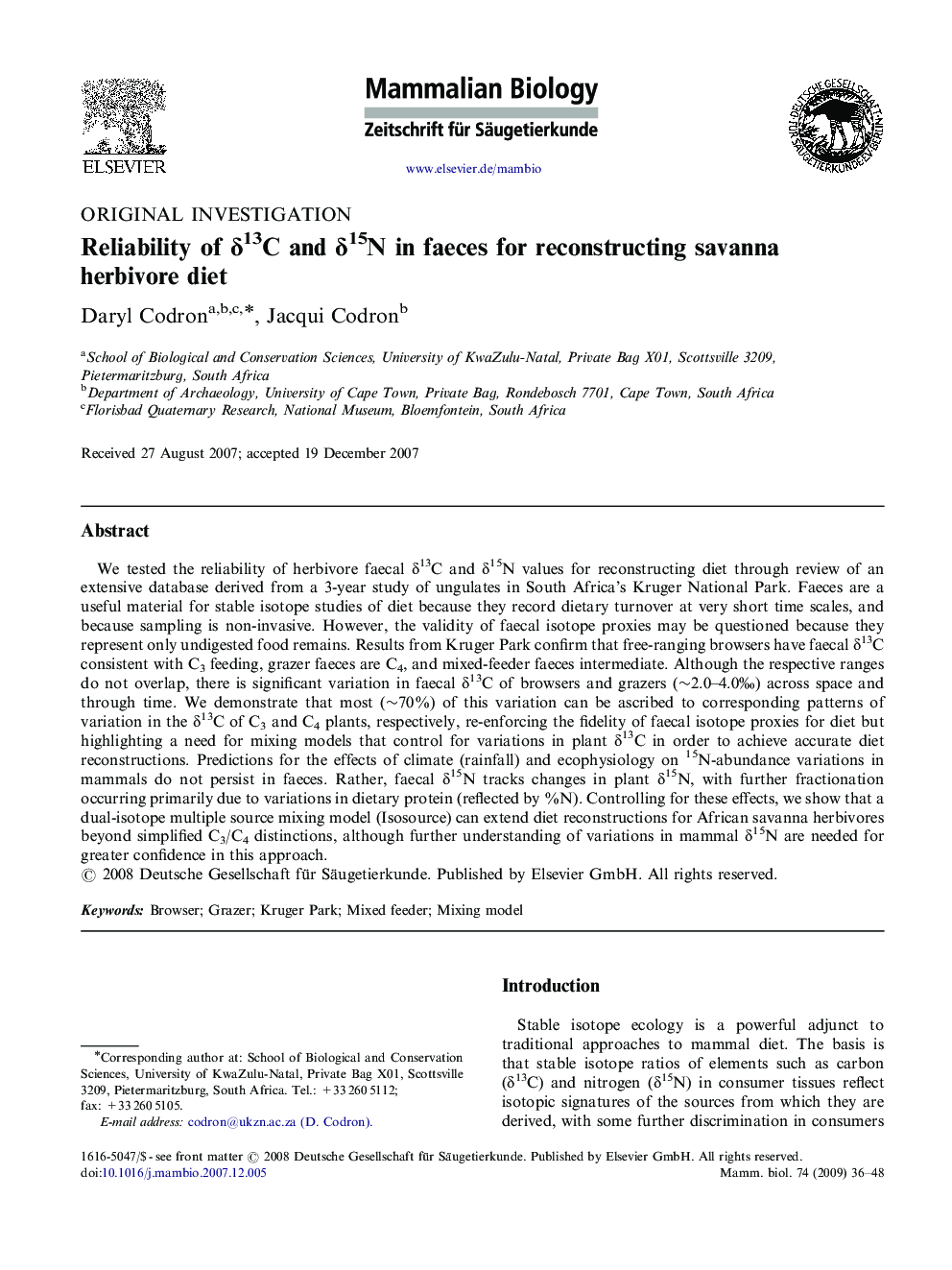| Article ID | Journal | Published Year | Pages | File Type |
|---|---|---|---|---|
| 2193989 | Mammalian Biology - Zeitschrift für Säugetierkunde | 2009 | 13 Pages |
We tested the reliability of herbivore faecal δ13C and δ15N values for reconstructing diet through review of an extensive database derived from a 3-year study of ungulates in South Africa's Kruger National Park. Faeces are a useful material for stable isotope studies of diet because they record dietary turnover at very short time scales, and because sampling is non-invasive. However, the validity of faecal isotope proxies may be questioned because they represent only undigested food remains. Results from Kruger Park confirm that free-ranging browsers have faecal δ13C consistent with C3 feeding, grazer faeces are C4, and mixed-feeder faeces intermediate. Although the respective ranges do not overlap, there is significant variation in faecal δ13C of browsers and grazers (∼2.0–4.0‰) across space and through time. We demonstrate that most (∼70%) of this variation can be ascribed to corresponding patterns of variation in the δ13C of C3 and C4 plants, respectively, re-enforcing the fidelity of faecal isotope proxies for diet but highlighting a need for mixing models that control for variations in plant δ13C in order to achieve accurate diet reconstructions. Predictions for the effects of climate (rainfall) and ecophysiology on 15N-abundance variations in mammals do not persist in faeces. Rather, faecal δ15N tracks changes in plant δ15N, with further fractionation occurring primarily due to variations in dietary protein (reflected by %N). Controlling for these effects, we show that a dual-isotope multiple source mixing model (Isosource) can extend diet reconstructions for African savanna herbivores beyond simplified C3/C4 distinctions, although further understanding of variations in mammal δ15N are needed for greater confidence in this approach.
